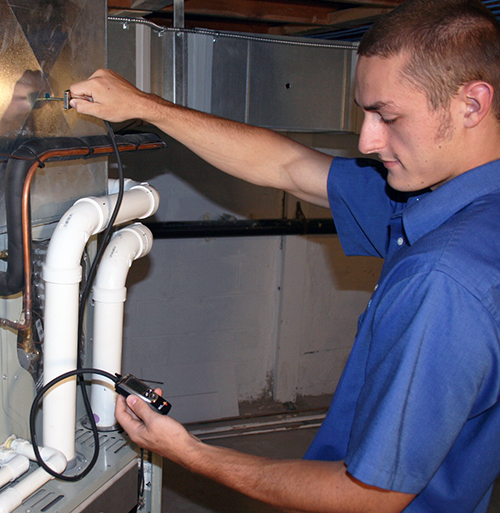Service/Maintenance Lead
This is one of the best types of leads since it is generated by your technician while testing a system during a service or maintenance call. You have virtually no competition in this instance.
Key symptoms like high static pressures at the equipment and across components, such as coils and filters, should trigger a conversation with the customer and a subsequent visit by a comfort advisor.
If you have technicians who sell, they would take steps to further diagnose and offer solutions.
There are some key signals to look for regarding customer comfort or energy efficiency complaints or issues.
Oftentimes the lead is initially triggered by a combination of aging equipment not worth repairing and longstanding issues with the system.
Once in ‘solutions mode,’ it’s good to begin testing the system as soon as possible.
The technician or comfort advisor should continue testing, asking lots of questions, and educating the customer every step of the way. When done properly, the customer will want to know what you can do to improve their system.
During your busy season, this type of lead is a great opportunity for following up once you slow down. Besides helping to level your cash flow, these off-season installations and renovations make working in attics and crawl spaces much more bearable for your installation crews.
On this type of sales call, bring your test instruments into the home as you need them. While it might be easier to bring in all your tools and instruments, it can overwhelm your customer and backfire, possibly jeopardizing the sale.
 Customers Seeking Solutions
Customers Seeking Solutions
When a customer calls you because they have comfort issues, indoor air quality problems, or high utility bills, they are giving you permission to thoroughly test their system.
In this case, bring all your diagnostic tools into the home. It puts on the type of show they are looking for. They expect and want you to test and diagnose their comfort system, and propose solutions to their issues.
The more you educate and empower customers to be involved in designing the solution, the more buy-in you will get. This is especially important with a fairly involved solution requiring a significant financial investment. One example of this could be a complete air distribution renovation that includes duct replacement, new runs, new registers and grilles, and so on.
These sales can be very profitable and rewarding. If the customer lives in a development of similar homes, chances are their neighbors have similar problems. Asking for referrals, coupled with some neighborhood targeted marketing, could yield huge results. A full test-out with documentation is extremely important on these type of leads.
Remember, the customer sought you out to solve one or more problem, and they will want proof that you delivered.
Equipment Replacement Lead
In this instance, it’s important to go slow. It’s best to ease the customer into letting you perform initial testing. You will often uncover longstanding problems they’ve probably learned to live with and thought nothing could be done about it.
 So start slow, first testing static pressures and asking lots of questions. As the customer’s comfort level increases about the newly introduced idea of testing, you can bring in an airflow hood and other instruments.
So start slow, first testing static pressures and asking lots of questions. As the customer’s comfort level increases about the newly introduced idea of testing, you can bring in an airflow hood and other instruments.
The key is to gradually educate the customer while asking permission to perform testing each step of the way.
For example, it’s important to let them know that you will need to install test ports to check the static pressures at the equipment. The last thing you want is to upset the customer by drilling holes into their equipment when all they wanted was an equipment replacement quote.
Before drilling the test ports, explain they should have been installed when the original equipment was put in, but unfortunately most contractors don’t understand the importance of testing equipment. You could also mention that before you received specialized training, you too just followed typical industry practices.
If you are the second or third salesperson in the home, you can use this opportunity to question why the others didn’t install test ports. After all, if you don’t measure, you’re just guessing!
Next month, in Part 9, we will walk through the six steps of a typical sales call and how each is influenced by the lead types discussed above.
Click for first page













Recent Comments